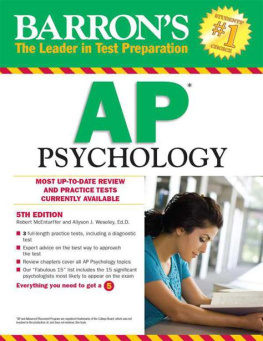
About the Authors Richard Ku has been teaching secondary mathematics, including Algebra 1 and 2, Geometry, Precalculus, AP Calculus, and AP Statistics, for almost 30 years. He has coached math teams for 15 years and has also read AP Calculus exams for 5 years and began reading AP Statistics exams in 2007. Howard P. Dodge spent 40 years teaching math in independent schools before retiring.
Acknowledgments I would like to dedicate this book to my wonderful wife, Doreen. R.K.
Copyright 2012, 2010, 2008 by Barrons Educational Series, Inc.
Copyright 2012, 2010, 2008 by Barrons Educational Series, Inc.
Previous edition Copyright 2003, 1998 under the title How to Prepare for the SAT II: Math Level IIC . Prior editions Copyright 1994 under the title How to Prepare for the SAT II: Mathematics Level IIC and Copyright 1991, 1987, 1984, 1979 under the title How to Prepare for the College Board Achievement TestMath Level II by Barrons Educational Series, Inc. All rights reserved.
No part of this work may be reproduced or distributed in any form or by any means without the written permission of the copyright owner. All inquiries should be addressed to:
Barrons Educational Series, Inc.
250 Wireless Boulevard
Hauppauge, New York 11788
www.barronseduc.com e-ISBN: 978-1-4380-8377-3
e-Book revision: August, 2012 Contents

PART 1
DIAGNOSTIC TEST PART 2
REVIEW OF MAJOR TOPICS PART 3
MODEL TESTS 
T he purpose of this book is to help you prepare for the SAT Level 2 Mathematics Subject Test. This book can be used as a self-study guide or as a textbook in a test preparation course. It is a self-contained resource for those who want to achieve their best possible score.
Because the SAT Subject Tests cover specific content, they should be taken as soon as possible after completing the necessary course(s). This means that you should register for the Level 2 Mathematics Subject Test in June after you complete a precalculus course. You can register for SAT Subject Tests at the College Boards web site, www.collegeboard.com ; by calling (866) 756-7346, if you previously registered for an SAT Reasoning Test or Subject Test; or by completing registration forms in the SAT Registration Booklet, which can be obtained in your high school guidance office. You may register for up to three Subject Tests at each sitting. Important Reminder Be sure to check the official College Board web site for the most accurate information about how to register for the test and what documentation to bring on test day. Colleges use SAT Subject Tests to help them make both admission and placement decisions.
Because the Subject Tests are not tied to specific curricula, grading procedures, or instructional methods, they provide uniform measures of achievement in various subject areas. This way, colleges can use Subject Test results to compare the achievement of students who come from varying backgrounds and schools. You can consult college catalogs and web sites to determine which, if any, SAT Subject Tests are required as part of an admissions package. Many competitive colleges require the Level 1 Mathematics Test. If you intend to apply for admission to a college program in mathematics, science, or engineering, you may be required to take the Level 2 Mathematics Subject Test. If you have been generally successful in high school mathematics courses and want to showcase your achievement, you may want to take the Level 2 Subject Test and send your scores to colleges you are interested in even if it isnt required.
OVERVIEW OF THIS BOOK A Diagnostic Test in Part 1 follows this introduction. This test will help you quickly identify your weaknesses and gaps in your knowledge of the topics. You should take it under test conditions (in one quiet hour). Use the Answer Key immediately following the test to check your answers, read the explanations for the problems you did not get right, and complete the self-evaluation chart that follows the explanations. These explanations include a code for calculator use, the correct answer choice, and the location of the relevant topic in the Part 2 Review of Major Topics. For your convenience, a self-evaluation chart is also keyed to these locations.
The majority of those taking the Level 2 Mathematics Subject Test are accustomed to using graphing calculators. Where appropriate, explanations of problem solutions are based on their use. Secondary explanations that rely on algebraic techniques may also be given. Part 3 contains six model tests. The breakdown of test items by topic approximately reflects the nominal distribution established by the College Board. The percentage of questions for which calculators are required or useful on the model tests is also approximately the same as that specified by the College Board.
The model tests are self-contained. Each has an answer sheet and a complete set of directions. Each test is followed by an answer key, explanations such as those found in the Diagnostic Test, and a self-evaluation chart. This e-Book contains hyperlinks to help you navigate through content, bring you to helpful resources, and click between test questions and their answer explanations. OVERVIEW OF THE LEVEL 2 SUBJECT TEST The SAT Mathematics Level 2 Subject Test is one hour in length and consists of 50 multiple-choice questions, each with five answer choices. The test is aimed at students who have had two years of algebra, one year of geometry, and one year of trigonometry and elementary functions.
According to the College Board, test items are distributed over topics as follows: Numbers and Operation: 57 questions
Operations, ratio and proportion, complex numbers, counting, elementary number theory, matrices, sequences, series, and vectors Algebra and Functions: 2426 questions
Work with equations, inequalities, and expressions; know properties of the following classes of functions: linear, polynomial, rational, exponential, logarithmic, trigonometric and inverse trigonometric, periodic, piecewise, recursive, and parametric Coordinate Geometry: 57 questions
Symmetry, transformations, conic sections, polar coordinates Three-dimensional Geometry: 23 questions
Volume and surface area of solids (prisms, cylinders, pyramids, cones, and spheres); coordinates in 3 dimensions Trigonometry: 68 questions
Radian measure; laws of sines and law of cosines; Pythagorean theorem, cofunction, and double-angle identities Data Analysis, Statistics, and Probability: 35 questions
Measures of central tendency and spread; graphs and plots; least squares regression (linear, quadratic, and exponential); probability CALCULATOR USE As noted earlier, most taking the Level 2 Mathematics Subject Test will use a graphing calculator. In addition to performing the calculations of a scientific calculator, graphing calculators can be used to analyze graphs and to find zeros, points of intersection of graphs, and maxima and minima of functions. Graphing calculators can also be used to find numerical solutions to equations, generate tables of function values, evaluate statistics, and find regression equations. The authors assume that readers of this book plan to use a graphing calculator when taking the Level 2 test. Note To make them as specific and succinct as possible, calculator instructions in the answer explanations are based on the TI-83 and TI-84 families of calculators.
You should always read a question carefully and decide on a strategy to answer it before deciding whether a calculator is necessary.
Next page
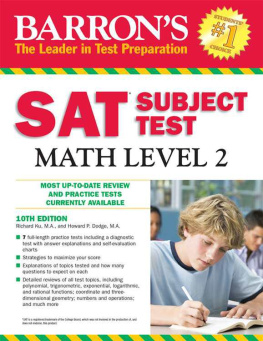

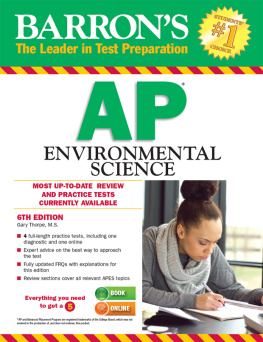
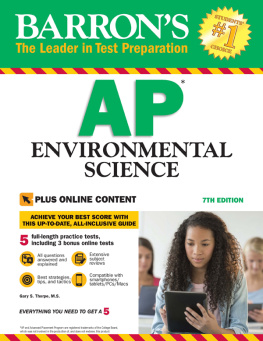
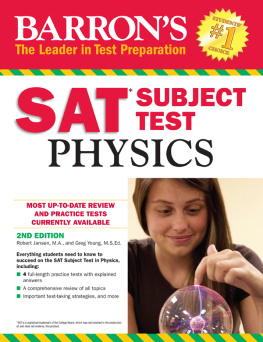
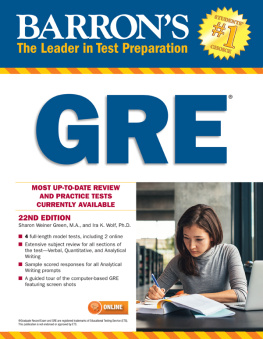
![Kristina Semos - Math 2 Cram Plan [SAT 2 Math Test Prep]: The Ivy Lounge Test Prep Guide to High-Speed, High-Impact Prep for the SAT II Subject Test in Math Level 2](/uploads/posts/book/162872/thumbs/kristina-semos-math-2-cram-plan-sat-2-math-test.jpg)
